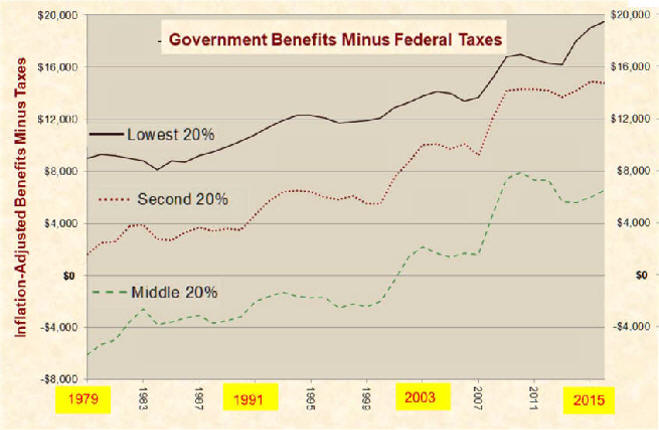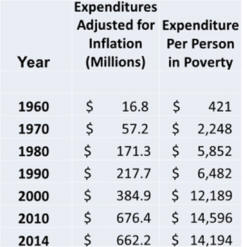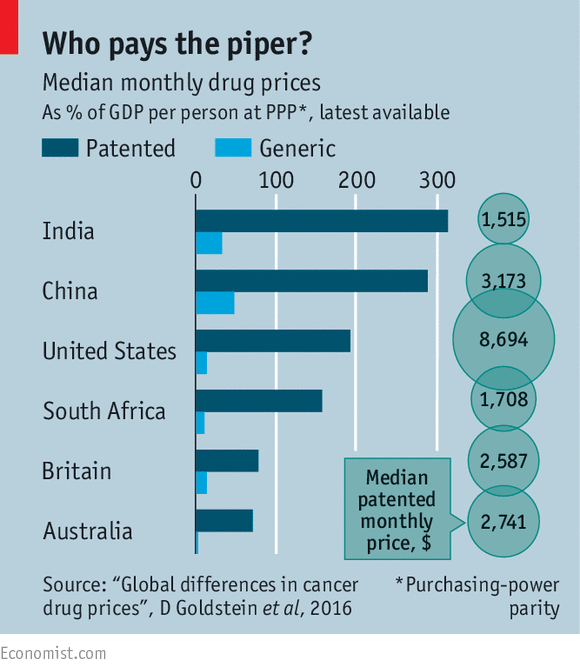|
Prelude:
Wealthy Get: Tax Breaks
Note: Much Unhappiness caused by
2.
Improvement is Not
Linear See Special Report U.S. Wellbeing: The Good & The Bad 3. People are Always Unhappy With Government
|
|
150 Years of Better
|
Production, Wages Up 4.5x
|
We Pay Lowest Taxes
|
|
Still People Are Unhappy 1) Society's Stability, Continuous Since Civil War 2) Production Up, Our Recent Economic System is Fine 3) Scientific achievements have continuously added to citizen well-being. 4) Stability and achievements are cumulative 5) Personal Income increased continuously, if not rapidly.
|
||
|
1) Society's Stability, Continuous Since Civil War, has allowed U.S. productivity to consistently increase. This is the key to individual well-being. Think how the public safety net has increased since the 1930's and the success of the federal children's bureau. Who wants to give up SS and Medicare? Why do some always want to cut other guys government benefits? Think economic distress in Russia, China, most advanced nations including Germany, France, Great Britain and Japan all had very unstable periods.. See "Why [How Has] Hasn't Economic Progress Lowered Work Hours More?" 42 min. video T. Cowen, Hayek Lectures
2) Production Up
Log Scale link
Current Economic Unhappiness =
3) Stability and Achievements are Cumulative
have continuously added to
citizen well-being. https://ourworldindata.org/much-better-awful-can-be-better
5) Personal Income
increased continuously,
6)
Will High Wellbeing Continue?
See
Child
and Youth Well-Being 
But
Some Feel Envy. Assistance to Top and Bottom Caused Populist Movement See Why is Poverty Controversial?
Please Use to Educate and Share! Hours Worked Down
Editor's Note:
textbooksfree.org/what
you should know about
|
|
|
|||||||||||||||||||||||||||||||||||||||||
|
Social Safety Net Has Increased Wellbeing source Editor's Note: We spend a
lot of money helping the needy
|
|||||||||||||||||||||||||||||||||||||||||
|
|
|
||||||||||||||||||||||||||||||||||||||||
|
Safety Net Share Constant
|
|||||||||||||||||||||||||||||||||||||||||
|
|
|||||||||||||||||||||||||||||||||||||||||
|
We Help Our Poor
|
||||
|
Science Contributions Will Help Grow Our Wellbeing
|
||||
|
|
||||
|
|
 |
|||
|
|
||||
|
|
Some Live Longer
Than Others
|
|||
|
World Has Made Progress
|
||||
|
|
|||||||||||||||||||||||||||||||||||||||||||||||||||||||||||||||||||||||||||||
 |
The Great Inflation Hurt Many Government Helped |
|
|
|
|
|
|
|
|
|
|
|
 |
|
|
|
||
|
How Some Spend Concerns SOME |
||
|
Bigger Houses
|
|
Lottery Winner is State Government
|
|
US Produces a Lot
|
U.S. Real Rich Get More of Lots 1993 - 2013 berkeley.ed
Top Half of Top 1% Really Make Lots |
It's
Accumulating
Some Measure Wealth Accumulation at Bottom but these Calculation Ignore the Wealth Associated With SS and Medicare! |
|
"oops"
|
 |
|
|
 |
|
Drug Costs
"They found that the highest prices were, indeed, paid by Americans.
Dr Goldstein went on to look at how the prices of these drugs measured up in terms of affordability. To express this he calculated the monthly price as a percentage of gross domestic product per person at purchasing-power parity (GDP atPPP).\ ACCEPTING THIS IS THE REAL TEST OF AMERICAN GENEROSITY cacer-drugs-cost-more-america-elsewhere-may-be-just-priced-out
|
|
|
Healthcare Becoming Our Biggest Need
Editor's Note: I know everyone is upset over rising health care cost but as a society becomes wealthier shouldn't the utility from feeling good and living longer supersede the need for more things or must all the additional production go to lowering our perceived fear after 9/11 attack of 2001? It's time to lower Defense, Homeland Security, a massive prison system. If I hear one more person say "be safe I'll scream" Listening to the Whether Channel in Florida they talk as if I'm in extreme danger from tornados in Kansas or a developing low near the Yucatan Peninsula that could be a hurricane and attack the US.
|
 |


























































